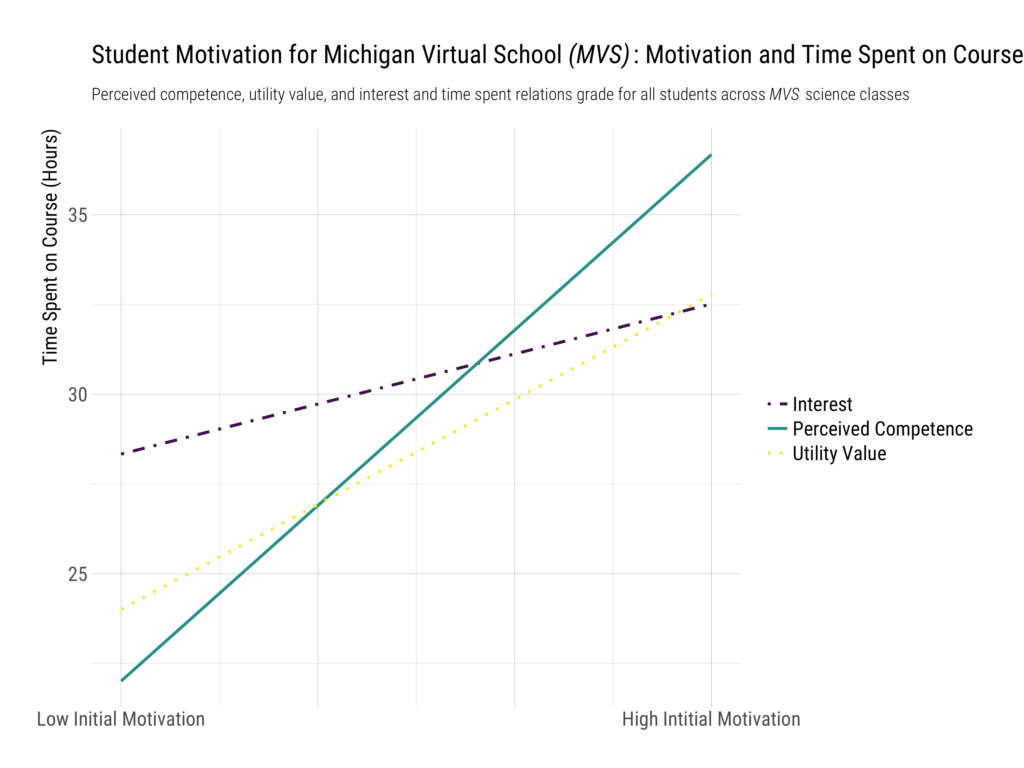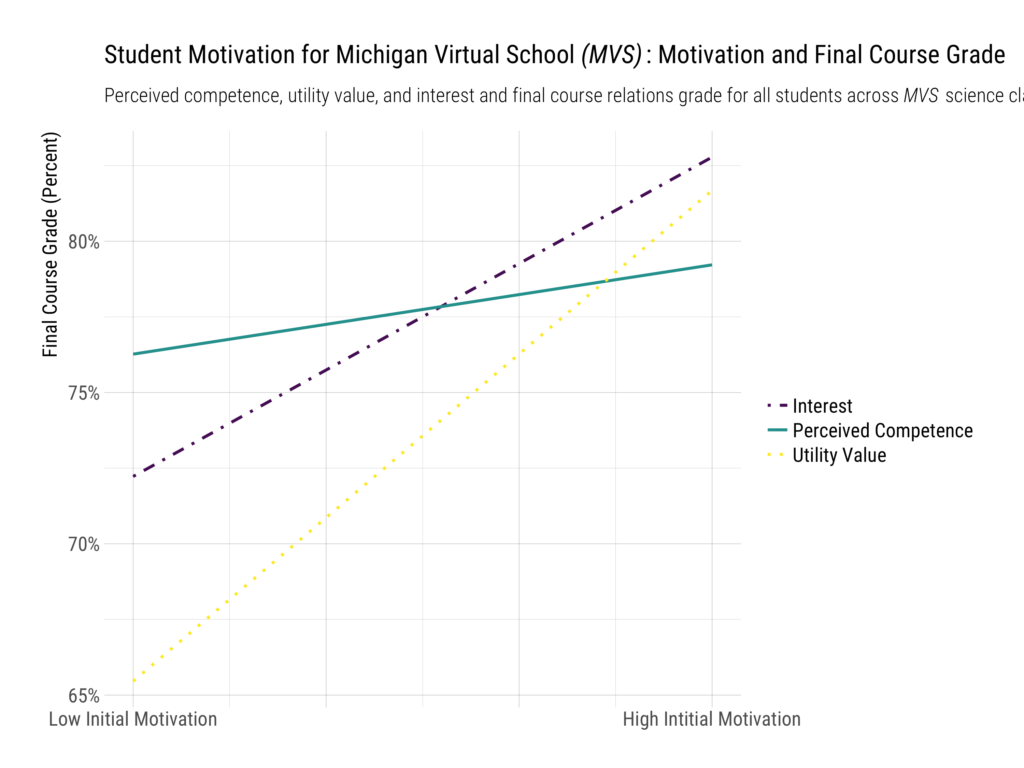Written by:
Joshua Rosenberg
Michigan State University
[email protected]
and
Dr. John Ranellucci
Hunter College, CUNY
[email protected]
How can we motivate our students to engage with the course material and learn as much as possible? This is a question that educational researchers, teachers, and instructional designers have been trying to answer for years. Although student motivation is important in virtually all learning settings, it is especially important in online courses for which student success depends largely on students taking an active role in their learning and self-regulating their behaviors. Prior to delving into the “what does motivation look like in our courses” and “how can we support student motivation” parts of this equation, it is important to first clearly understand what motivation is.
What is motivation?
We all have experienced what motivation is, what it looks like, and how it feels. We might describe the experience of motivation as having a clear goal in mind, feeling energized toward reaching that goal and caring about the outcome. Although we all intuitively know what motivation is, we might not agree on a specific definition or the key ingredients of this concept. Similarly, educational researchers have explained motivation in dozens of different ways, with common themes but little consensus. This is partially based on subjective preferences of different individuals or researchers but is mostly due to the complexity of the multi-faceted concept of motivation.
In a recent blog post, Stephanie Wormington does an excellent job of highlighting the complexity of comprehensively measuring and interpreting motivation across five key dimensions. The dimensions Stephanie writes about are perceived competence, value, mastery, performance approach, and performance-avoidance. We adopt a similar approach; however, we focus on three dimensions identified as particularly important aspects of motivation from past research namely perceived competence (Pekrun, 2006), utility-value (Eccles & Wigfield, 2000), and interest (Hidi & Renninger, 2006).
- Perceived competence (“Can I do it?”): Relates to students’ expectancy for success and their level of confidence in their ability.
- Utility-value (“Will I be able to use what I learn?”): Consists of the perceived usefulness or practical relevance of the learning content.
- Interest (“Do I care about what I’m doing?”): Involves the personal relevance and individual attraction to the learning content.
Having established what motivation is and how we conceptualize motivation across these three dimensions, the first question that we wanted to answer through our work with Michigan Virtual School students was “What does motivation look like in our online classes?”
What does motivation look like in our online classes?
With MVLRI researcher Kristen DeBruler’s guidance and support, and help from cooperating course instructors and students, we asked students in five MVS science courses (Anatomy & Physiology, Forensic Science, Oceanography, Physics, and Biology) about their motivation — in particular, their perceived competence, utility value, and interest. We also kept track of the time students spent on the course website and their final course grades.
In particular, we were interested in how perceived competence, utility value, and interest differed between science courses offered through MVS. As you can see from the figure below, on a scale of 1 (strongly disagree) to 5 (strongly agree) students reported high levels of perceived competence, utility value, and interest in all of the science courses explored. Actually, students were close to the maximum possible score on our measure of interest and utility value in Anatomy & Physiology and indicated similarly high levels of interest in Forensic Science, and Oceanography. Although perceived competence and utility value seem low in a few courses (e.g., Forensic Science, Oceanography, and Biology), these values correspond to a response between “Neutral” and “Agree.” We also note differences between classes: while utility value and interest were both high relative to perceived competence in Anatomy & Physiology and Physics, interest was significantly higher than utility value for students in Forensic Science, Oceanography, and Biology.
The take home message: While based on descriptive statistics and so needing to be interpreted as an overview, students in MVS’s online science classes are confident, interested, and see the courses as useful; but there are important differences between classes, and these scores can be higher, particularly in physics and biology.

What outcomes does motivation relate to in our online courses?
The second question we asked was “What does motivation relate to in our online courses?” We decided to focus on two main outcomes that we thought should relate to students’ perceived competence, utility value, and interest.
First, we examined the relationship between these three parts of motivation and the amount of time students spent on the course website. As examined with linear models, the figure below shows that as students’ perceived competence, utility value, and interest increase, the amount of time that students spend in hours on the course website also increased significantly. (Each type of motivation demonstrated a relationship with time spent that was statistically distinct from no relationship,) Furthermore, based on the sharper increase in utility value, we see that this is an especially relevant variable for predicting time spent on the course.
The take home message: Although all three factors are important and in particular students will spend more time engaging with the course content if they understand how the content is useful in their lives.

Second, we wanted to see how motivation at the beginning of the course relates to academic achievement. Our results, displayed in the figure below, suggest that higher levels of perceived competence, utility value, and interest at the beginning of the semester are associated with significantly higher final course grades. (For example, for time spent, each type of motivation demonstrated a relationship with course grades that was statistically distinct from no relationship.) In this analysis, we found that interest is an especially important variable that differentiates lower achieving students from higher achieving students.
The take home message: Again, although all three factors are important, the more students are interested, the higher their grades tend to be.

Strategies to Support Motivation
A key point we want to highlight is that student motivation is not only something that teachers (and instructional designers) can impact, but do all of the time. As teachers (and instructional designers), we impact our students by the activities and lessons we design, the way we provide feedback to students, and even how much of a sense of belonging we create in our classrooms. Recent research has synthesized studies on motivation and pointed to some key motivational tips (Linnenbrink, Patall, & Pekrun, 2016):
- Support competence through well-designed instruction, challenging work, and informational and encouraging feedback. For students to think “I can do what I need to do to succeed,” supporting students’ sense of competence is key. Carefully scaffolded and designed assignments, (appropriately) challenging and regular and supportive feedback are practices that teachers and instructional designers can emphasize in both face-to-face and online classes.
- Support students’ autonomy through opportunities for student decision-making and direction. For students to think “I can do this,” students’ autonomy beliefs are important. Providing opportunities for students to choose between assignments or even the type of tasks they must complete to learn or demonstrate achievement can help support students’ autonomy, and in some cases can be easier for students in online classes to choose when to work on assignments because they can be more self-paced and self-directed in their learning.
- Select personally relevant, interesting activities that provide opportunities for active involvement. For students to think “I can use this in the future,” the relevance of what students are learning and how they learn is essential. Personally relevant activities grounded in students’ curiosity and interests can help make learning relevant to students and is both challenging and important in online classes.
- Emphasize learning and understanding and de-emphasize performance, competition, and social comparison. For students to think “I want to learn as much as I can,” emphasizing mastery, rather than performance, is pivotal. Group and class activities focusing on what each student learns and how everyone grows rather than on how students rank relative to one another can support an emphasis on learning and understanding rather than social comparisons. This may be especially important to discussion board posts in which students share their ideas (or work): An emphasis in the directions on what students learned, rather than on their grades, can emphasize mastery.
- Support feelings of belonging among students and with teachers. For students to think “I belong in this class,” students must feel like they are part of the classroom community. Eliciting and responding to students’ feedback, and making sure each student feels comfortable sharing thoughts and ideas with teachers and peers, can emphasize students’ sense of belonging. As many teachers and instructional designers for online classes know, establishing open lines of positive communication can have an important impact on students’ motivation to learn.
For more resources on supporting students’ engagement, Linnenbrink-Garcia et al. (2016) and Wentzel and Brophy (2014) are great resources because of their emphasis on research and applicability to teaching and designing learning activities for students. We hope this post has helped to describe the importance of motivation, what it looks like and what it relates to in online classes, and strategies to support motivation. We have benefitted from and are grateful for our collaboration with MVS and hope to continue our work with researchers, teachers, and students at MVS in the future.
References
Hidi, S., & Renninger, K. A. (2006). The four-phase model of interest development. Educational Psychologist, 41,111-127.
Pekrun, R. (2006). The control-value theory of achievement emotions: Assumptions, corollaries, and implications for educational research and practice. Educational Psychology Review, 18, 315-341.
Linnenbrink-Garcia, L., Patall, E. A., & Pekrun, R. (2016). Adaptive motivation and emotion in education research and principles for instructional design. Policy Insights from the Behavioral and Brain Sciences, 3, 228-236.
Wentzel, K. R., & Brophy, J. E. (2014). Motivating students to learn. New York, NY: Routledge.
Wigfield, A., & Eccles, J. S. (2000). Expectancy–value theory of achievement motivation. Contemporary Educational Psychology, 25, 68-81.
